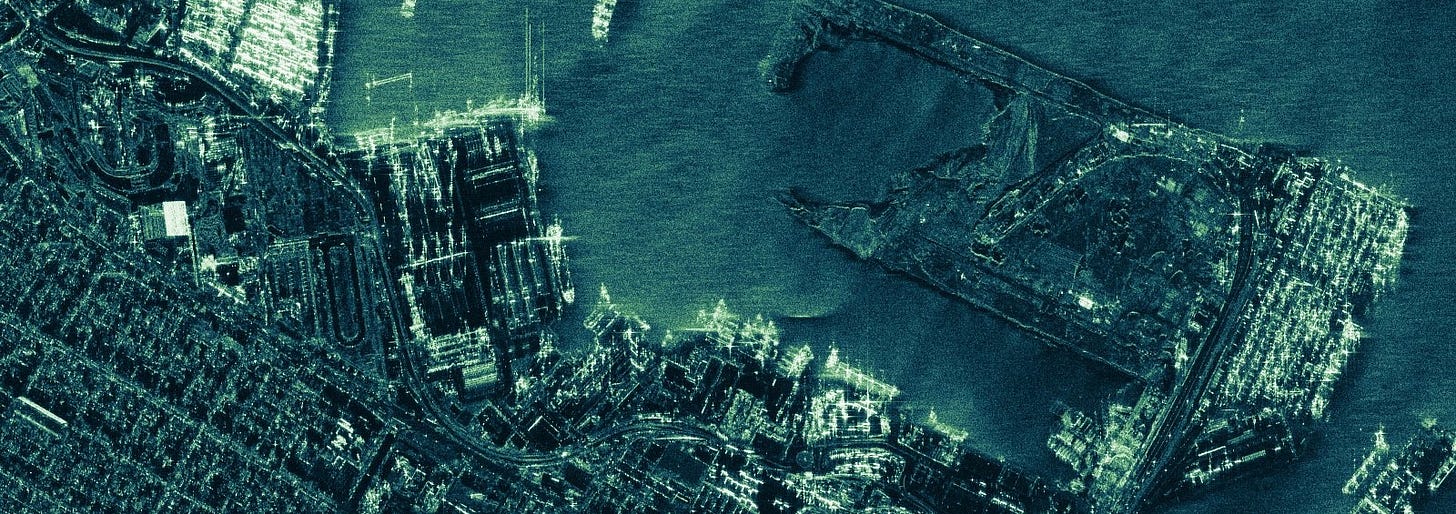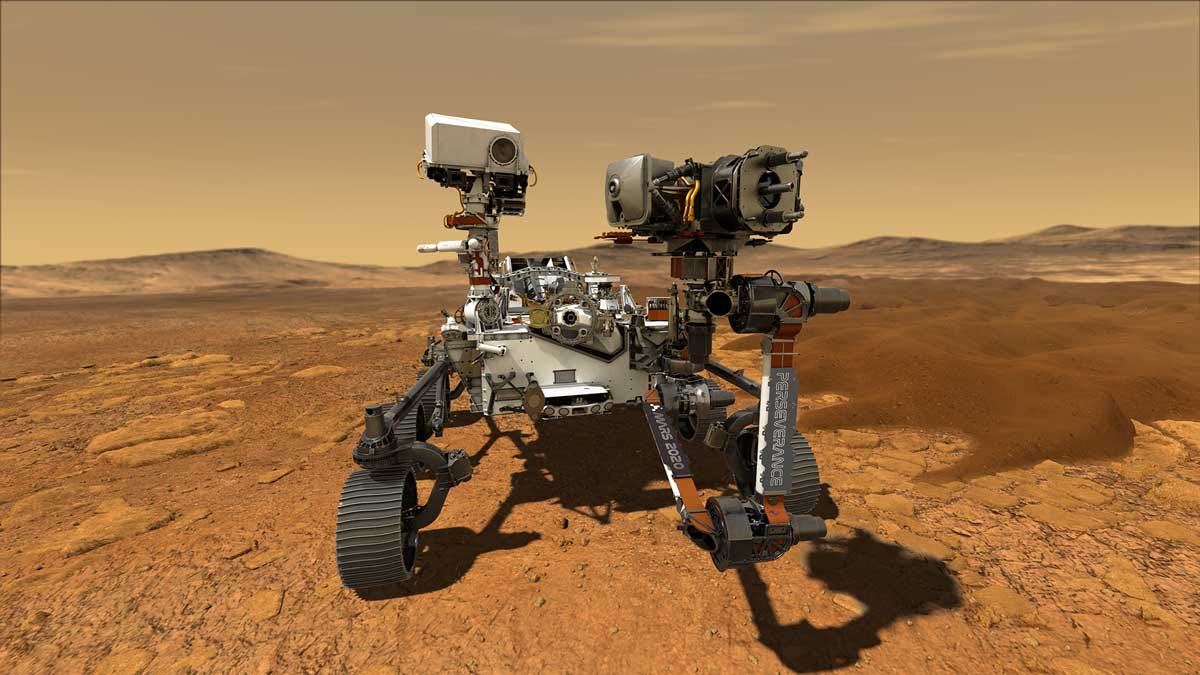AI in Space Part I: an Overview
Discover how AI is used in the aerospace sector from planning deep space missions and driving mars rovers to getting insights from Earth observation images.
Issue 112. Subscribers 37,282.
If you want to dive deeper into spacetech, Space Ambition co-founder Denis Kalyshkin is launching a WhatsApp group where, on a weekly basis, you can discuss trends, deals, niche specifics, etc. Join the community of like-minded people here.
Larry Fink (BlackRock CEO) in New York at BlackRock's 2023 Investor Day:
"I believe that AI has a huge potential to increase productivity, expand the knowledge base, and transform margins across sectors."
While this may seem an unusual quote to start a spacetech article with, I believe it reflects the sentiment surrounding AI nowadays. In the 'post-ChatGPT' era, almost everyone has heard of or tried AI-based products. However, AI is not just about LLMs or image generation, it has been around for a long time, already disrupting technical industries. Spacetech is not an exception. AI is transforming the spacetech sector, with applications ranging from autonomous spacecraft navigation to the analysis and processing of both upstream and downstream data. AI integration is not only enhancing current space missions but also creating new opportunities in space exploration, research, engineering, and commercial activities. In this article, I want to cover some of the most important use cases and kick off a series of articles about AI in spacetech.

Briefly About AI
The history of artificial intelligence is a journey from philosophy to technology. Technically, first thoughts in that area could be traced back to antiquity, but formal studies began in the 20th century when scientists started to study the possibility of creating machines that could "think" as humans do. The term ‘Artificial Intelligence’ first appeared in 1956, marking the birth of AI as a field of study. Early AI research focused on problem-solving and symbolic methods. Later, advancements in computing power, data availability, and the development of new algorithms, particularly in machine learning and deep learning, have accelerated the development of new applications in recent decades. Today, AI is presented in numerous fields of modern life, from virtual assistants and personalized recommendations to medical diagnosis and self-driving cars.
Early applications of AI in spacetech, at the same time, involving the analysis of satellite imagery and automation of spacecraft operations, appeared as early as the 1970s. During the early days of satellite remote sensing, AI techniques were used to process images from programs like Landsat. As space exploration became more complex, AI's role moved further, so in NASA's 1997 Mars Pathfinder mission the Sojourner rover used some AI-based autonomous navigation.
AI in Spacetech Now
AI is typically used for cognitive tasks. While it’s quite natural to apply AI to various tasks on Earth, space has its challenges, such as harsh environments or unstable communications. At the same time, the spacetech market, valued at nearly $460b in 2024, is currently growing, driven by many factors, including AI integration and is projected to reach between $700b and $1t by 2030.
Despite the specific complexities of the spacetech industry, AI applications here are diverse. The most significant ones relate to the autonomy of spacecraft, mission planning and execution management, monitoring and analysis, data science, design and manufacturing, and space situational awareness. Let’s dive a bit deeper into each of them.
Autonomous Navigation and Exploration
One of the most complex and arguably most important applications of AI in space is enabling autonomous navigation. This applies to both near-Earth missions and those beyond Earth's orbit. Deep space missions, in particular, require spacecraft to make real-time decisions by itself without constant input from ground control. Communication limitations make it inefficient and unsustainable to rely on human operators for every single decision.
One of the latest examples of autonomy in space is the Mars Perseverance rover. It’s essentially an AI-based Swiss knife for Mars research, using various AI/ML tools for terrain navigation and scientific research. The rover analyses images, identifies hazards such as rocks, and plans its route to self-navigate. These systems employ machine learning techniques to interpret data from sensors, like cameras, radar, and lidar, building a model of their environment to make decisions about navigation and study areas. At the same time, the rover is equipped with an autonomous sample selection tool, identifying promising sites for geological studies. This means the rover can decide which areas are likely to contain interesting scientific data, collect samples, and prepare them for return to Earth, all without specific instructions from Earth. Finally, the AEGIS (Autonomous Exploration for Gathering Increased Science) system is another AI-powered tool that autonomously collects scientific data.

Mission Planning
Any spacetech project is challenging not only from a technical perspective but also regarding planning, and budgeting. Many missions are long, costly, and resource-heavy. In this context, AI acts as a co-pilot, enhancing productivity and assisting with planning and budgeting. For example, by analyzing data, it can determine the most efficient trajectories for spacecraft, minimizing resource use. AI can also mitigate design process risks, delays, and other unwanted events before and during the mission.
NASA's ASPEN Mission Planner toolkit, for instance, uses AI to optimize mission efficiency, manage operational delays, and streamline the scheduling of sophisticated activities. The tools analyze various factors, including orbital mechanics, spacecraft capabilities, and mission objectives, to generate effective mission plans. AI can process vast amounts of data and identify optimal solutions, minimizing human error risk, optimizing resource use, and improving mission success rates. Other AI-powered tools such as AWARE (Autonomous Waiting Room Evaluation), manage operational delays and improve mission scheduling and resource allocation. The CLASP (Coverage Planning & Scheduling) system also helps in resource allocation, ensuring seamless mission execution. These algorithms can adjust the schedule in response to unpredictable events, such as solar flares or weather changes.
Monitoring
Earth observation (EO) is maybe the most dominant AI use case. EO satellites (there were 1052 active EO satellites in orbit in 2023, which made up 15% of all spacecraft) collect large amounts of data, including images, spectral, radar, lidar data, and many others. Specific AI-based solutions that are uniquely suited for these purposes, can identify objects, patterns, and anomalies, classify data entries, and automate processing to draw insights into topics ranging from natural disasters to financial projections (by the way, we’ve covered EO use cases in our earlier readings).
Compared to other AI use cases, the number of applications here is enormous, from enhancing radar data, empowering ICEYE products to mapping cities by larger corporations like Google. However one of the most impact-driven use cases is ESA's Copernicus program, which uses AI to analyze satellite imagery for detecting deforestation, urban expansion, and changes in ice and sea levels, to enable sustainability monitoring and help in developing effective strategies for environmental protection. On the other hand, Muon Space's AI-driven FireSat system, developed in collaboration with Google, uses custom infrared sensors to detect wildfires. It rapidly analyses data and provides updates, helping to detect wildfires, every 30 minutes.

Data Management
Space missions generate massive amounts of data that are hard to manage and analyze manually. Raw data may include EO data, telemetry, sensor readings, and samples. AI can automate the organization, tagging, and analysis, making it easier for scientists to access and interpret information, or be used in prediction and forecasting.
For instance, NASA's OCIO STI Concept Tagging Service uses AI tools to organize and tag NASA's scientific data, making it more accessible for analysis. This can be seen as a classic productivity tool, allowing specialists to focus on significant tasks rather than routine ones.
Important to mention, that there is astronomically large potential for onboard data management (edge computing), which reduces the data that must be transmitted back to Earth, saving bandwidth and costs. The FSSCat mission was the first European EO mission to carry AI onboard, demonstrating AI's potential for cloud detection.
Situational space awareness
The increasing number of satellites and space debris (which threatens spacecraft) orbiting Earth creates another monitoring opportunity - a fully opposite task as compared to Earth observation. In-orbit objects are usually classified, catalogued, and monitored using in-space and on-Earth systems. AI can analyze data from sensors, predicting debris trajectories and enabling timely collision avoidance maneuvers (we have a series of articles about space debris – the one about passive deorbiting, the one about collision avoidance, and the one about sustainability in space).
LeoLabs, as one of the SSI industry representatives, uses AI for space debris tracking, providing real-time alerts to satellite operators. Their AI algorithms analyze data from ground-based radars to predict debris trajectories and identify potential collision risks. The ESA's first debris removal project will utilize AI-enabled cameras to locate and capture space debris autonomously. This project also involves using AI to identify, track, and capture debris.

Design and Manufacturing
The engineering design process is a significant part of the hardware production workflow. Like in many other engineering industries, AI is disrupting workflows, increasing efficiency, and optimizing results with its ability to analyze complex datasets and generate innovative design solutions. Use cases range from discovering new materials to co-piloting engineers in design and testing procedures, making spacecraft design more efficient, cost-effective, and resilient.
Few examples of AI use in design and manufacturing include discovering new materials, such as high-entropy alloys (HEAs), which are strong, lightweight, durable, and more resistant to the harsh conditions of space, making them ideal for spacecraft. Another example is text-to-CAD AI models. While still early, these can significantly change the design development process. Optimizing construction, generating new components models, and creating assemblies with a single prompt are becoming possible with products like Adam and Zoo.dev.
Aftermath
While AI offers numerous benefits for spacetech, its implementation is complicated by specific limitations. Design and manufacturing in spacetech must be as accurate as possible to avoid potential system loss, thus, approximate results are often unacceptable. Hardware production is also limited by accuracy constraints. Additionally, potential edge computing faces challenges due to the harsh space environment (radiation levels, extreme temperatures, and significant autonomy requirements). Additionally, AI systems are only as unbiased as their training data, raising concerns about potential biases in AI algorithms used for space applications.
Nonetheless, AI is becoming an important part of space technology fast, becoming a partner in design, execution, and processing as opposed to a simple tool that follows orders. As AI technologies continue to advance, their integration into space exploration will only grow, enabling deeper and longer space missions and developing sustainable solutions for planetary exploration.
You have all probably watched “2001: A Space Odyssey” by Stanley Kubrick and remember the damage AI could cause in space. We at Space Ambition believe that if properly used AI will become our ally in conquering space. And what AI applications for spacetech do you know? Please share with us in the comments below or shoot us an email via hello@spaceambition.org. We’d be happy to brainstorm with you!



